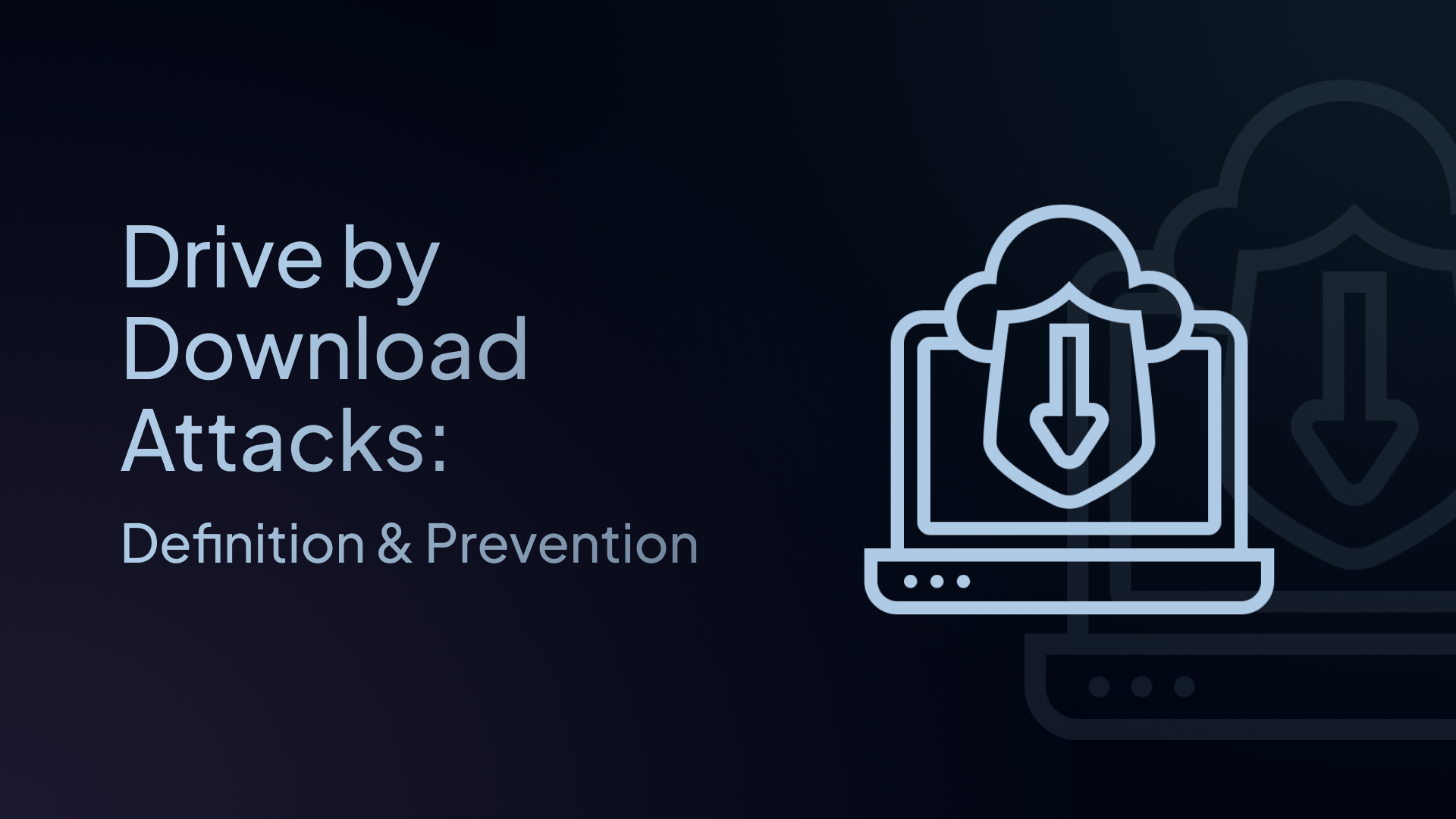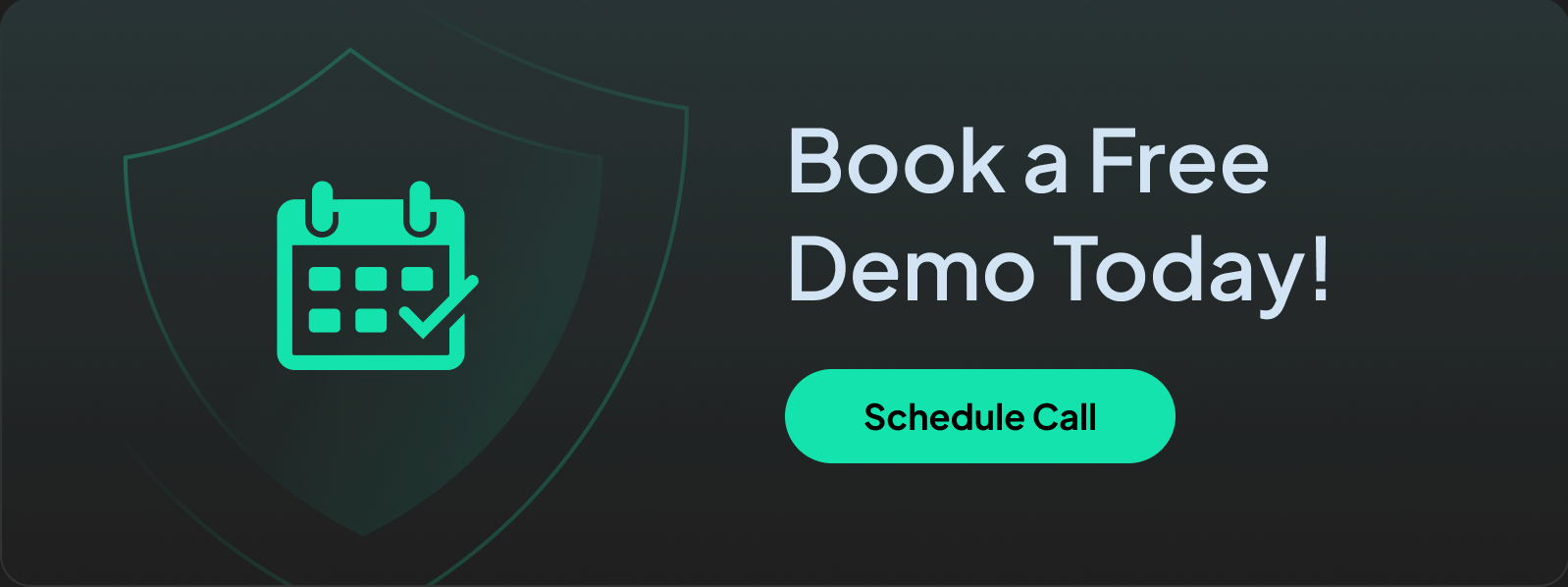Drive-by Download Attacks: Definition & Prevention
Drive-by download attacks are silent threats. Learn what they are, how they work, and the best ways to defend your devices and network.

Drive-by download attacks are among the most dangerous cyber threats today. These silent attacks can infect your computer or mobile device just by visiting a compromised website – no clicking or opening a file required.
In this guide, we'll explain what drive-by download attacks are, how they work, and most importantly, how to protect yourself and your business from them.
Let’s dive in.
What Is a Drive-by Download Attack?
A drive-by download refers to a type of cyberattack in which malicious code is downloaded to your device without your knowledge or intent. It can happen in two ways: either silently just by visiting a compromised website or through deceptive means, such as clicking a fake pop-up, ad, or downloading bundled software.
In many cases, you don’t have to press "Download" or open an email attachment. The malware installs itself automatically by exploiting hidden security flaws in your web browser or system.
These attacks are called "drive-by" because they're similar to drive-by incidents. They happen quickly and without warning as you pass by (or in this case, visit) a web page.
What Are Drive-by Download Attacks Designed to Do?
Drive-by downloads are meant to give attackers control, access, or disruption without your knowledge. Their goals typically fall into one or more of the following categories:
- Hijack your device – to add it to a botnet, spread infections, or breach deeper into your network.
- Spy on your activity – to steal credentials, financial data, personal information, or identity.
- Disrupt or destroy – encrypting files, corrupting systems, or simply causing chaos.
Without the appropriate security software or vulnerability fixes in place, any visit to a compromised site could leave you open to these threats.
How Do Drive-by Download Attacks Work?
Drive-by download attacks typically begin with a malicious or compromised website, where hackers either create fake web pages or inject harmful code or malicious scripts into trusted ones. These attacks fall into two categories:
- Authorized downloads – where you click a deceptive link, interact with a fake alert, or install bundled software that includes hidden malware.
- Unauthorized downloads – where simply visiting the site is enough to trigger malware, no clicks are required.
Here’s how it works:
- You visit the web page – from a search engine, social media, or a link in an email.
- The site runs malicious scripts – which scans your device for outdated software, plugins, or browser flaws.
- If a vulnerability exists, the unintentional download begins – often without any prompt or alert.
You didn’t manually download anything. You didn’t give permission. But your system may now be infected.
4 Common Types of Drive-by Download Attacks
Understanding the 4 common types of drive-by download attacks can help you recognize and prevent them:
1. Exploit Kits
These are toolkits cybercriminals use to identify and exploit vulnerabilities in browsers, plugins, or operating systems. Once a weakness is found, the kit deploys malware automatically; no interaction is required from you.
They are designed to slip past basic defenses and often use small pieces of code that act as a gateway, contacting external servers to download the rest of the malicious payload.
2. Malvertising
This combines "malware" and "advertising." Criminals place malicious ads on legitimate websites. When a user visits these sites, the ads automatically try to infect their computer. Even trusted news sites and popular blogs can accidentally serve malicious ads.
3. Watering Hole Attacks
Criminals identify websites that their target victims frequently visit. They then infect these sites with malware. When the targets visit these "watering holes," they get infected. This method is often used in targeted attacks against specific companies or groups.
4. Social Engineering Drive-bys
These attacks trick you into downloading malware by impersonating something trustworthy, like a fake antivirus alert, browser warning, or software update.
Some also use bundleware, where potentially unwanted applications (PUAs) are attached to free downloads. These extras are often hidden behind misleading installation prompts or opt-out checkboxes and may include spyware, adware, or malware in addition to other malicious software.
How to Detect Drive-by Download Attacks
For IT Professionals:
- Monitor network traffic for suspicious connections
- Look for unexpected DNS queries to known malicious domains
- Check for unauthorized file downloads in system logs
- Use endpoint detection and response (EDR) tools
For Regular Users:
- Run full system scans if your computer acts strangely
- Check your browser for unexpected extensions or toolbars
- Monitor system performance for sudden slowdowns
- Review installed programs for unfamiliar software
7 Steps to Protect Yourself from Drive-by Download Attacks
The good news is you can protect yourself with a few simple steps.
✅ 1. Keep Software Updated
Drive-by download attacks typically target two types of vulnerabilities:
- Zero-day exploits – flaws that haven’t been discovered yet
- Known exploits – security vulnerabilities that simply haven’t been patched, or the fix hasn’t been installed by the user
Many successful attacks are known exploits, where outdated systems cause software vulnerabilities. Updates to browsers, operating systems, and plugins often contain security patches that fix these known weaknesses, so skipping them leaves your devices exposed.
By keeping your software up to date, you’re not only improving performance, you’re actively sealing off entry points that attackers are counting on, making it your first and most effective line of defense against known threats.
A simple way to follow this step is to enable automatic updates.
✅ 2. Use a DNS Filtering Service
DNS filtering services, such as Control D, block access to harmful websites or domains before you even connect to them. Think of it as a smart filter for your internet.
Here's how DNS filtering helps:
- Blocks access to known malicious domains
- Analyzes domains in real time to block suspicious websites from loading
- Prevents malware from communicating with command servers
- Stops phishing attempts
- Reduces exposure to malvertising
Quality DNS filtering tools maintain constantly updated lists of dangerous websites and can block new threats as they emerge. So even if someone tries to trick you into visiting a dangerous site, it gets blocked from loading, thus stopping the attack before it starts.
✅ 3. Install Strong Security Software
Use trusted antivirus and security tools to help catch malware that may sneak through. These tools often:
- Enable real-time protection
- Keep your security software updated
- Run regular system scans to identify issues
✅ 4. Disable Unused Browser Plugins, Programs, and Apps
Avoid cluttering your device with unnecessary programs or plug-ins. The more software you have, the larger your attack surface becomes.
Stick to trusted, regularly used apps, and uninstall anything unused or no longer supported.
✅ 5. Be Careful Where You Click
Avoid clicking on ads, pop-ups, or sketchy links – especially in emails or on social media – and try to use reputable websites for downloads.
✅ 6. Use an Ad Blocker
Many drive-by download attacks are often spread through malicious online ads (malvertising). Blocking ads helps limit exposure to these threats while browsing.
✅ 7. Use Advanced Protection
Advanced protection measures you can take include:
- Enabling your browser's security features
- Using a firewall
- Using a VPN
- Enabling two-factor authentication on accounts
Business Protection Strategies for Drive-By Download Attacks
In businesses, one employee clicking a bad link can lead to major damage. From data leaks and ransomware infections to downtime, customer trust issues, and huge repair costs, companies need to take additional protection measures:
| Category | Recommended Actions |
|---|---|
| Employee Training |
|
| Technical Controls |
|
| Network Security |
|
Who's at Risk from Drive-by Download Attacks?
Everyone who uses the internet is at risk, but some groups face higher danger:
Individual Users
- People who don't update their software regularly
- Users who click on lots of ads and links
- People who visit suspicious websites
- Users with older computers or browsers
Businesses
- Companies with employees who browse the web at work
- Organizations that don't have proper security policies
- Businesses with outdated software and systems
- Companies that handle sensitive customer data
High-Value Targets
- Government agencies
- Financial institutions
- Healthcare organizations
- Technology companies
- Legal firms
Final Thoughts: Stay Safe with Smart Tools and Habits
Drive-by download attacks are quiet, fast, and dangerous. They can cause significant damage without any obvious warning signs.
The key to preventing drive-by download attacks is maintaining good security hygiene:
- Keep everything updated
- Use a DNS filtering service like Control D
- Be careful where you browse
- Use antivirus and ad blockers
- Educate your team or family
Remember, cybersecurity is an ongoing process, not a one-time setup. Stay vigilant, keep learning, and don't hesitate to invest in proper protection; the cost of prevention is always less than the cost of recovery from an attack.

Frequently Asked Questions (FAQs)
1. Can I get a drive-by download on my phone?
Yes. Mobile devices are also targets, especially Android phones without updates or protection.
2. Do drive-by downloads need me to click anything?
No. That’s what makes them dangerous. They can happen without any clicks at all.
3. Is Control D the same as a VPN?
No. Control D is a DNS filtering service. It blocks bad websites and gives you control over what you access. It works with or without a VPN.
4. How do I know if I’ve been infected?
Look for slow systems, pop-ups, new programs you didn’t install, or strange behavior. Run antivirus scans regularly.

